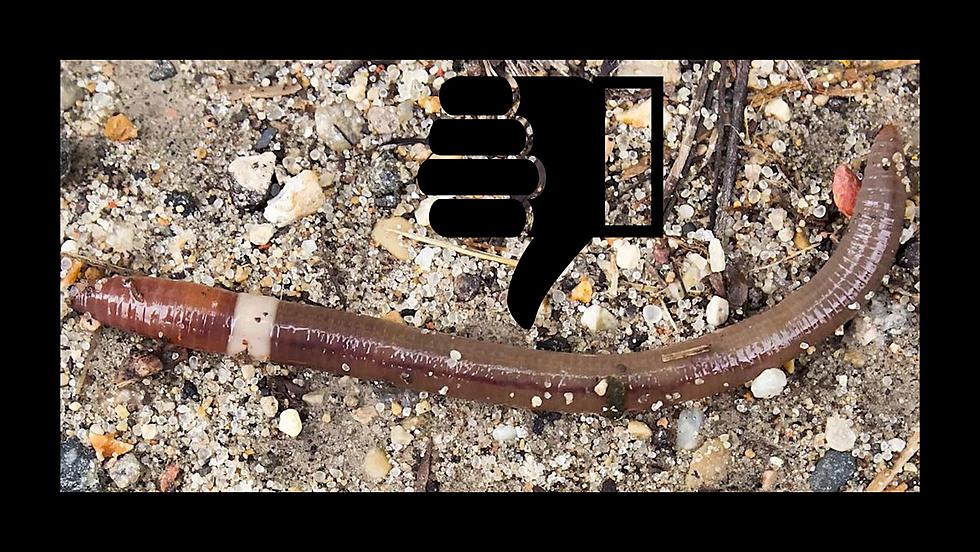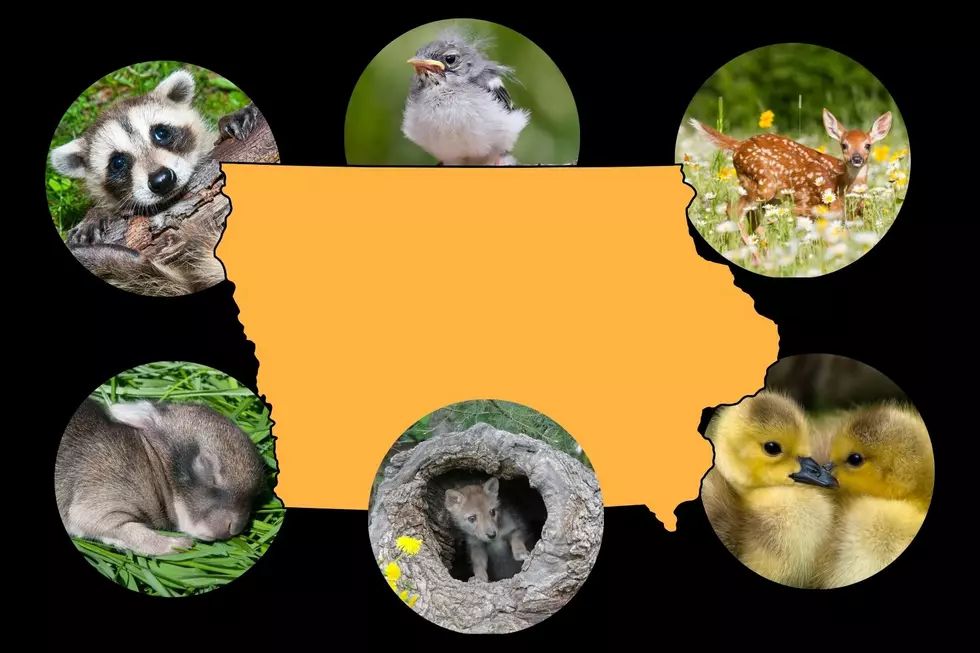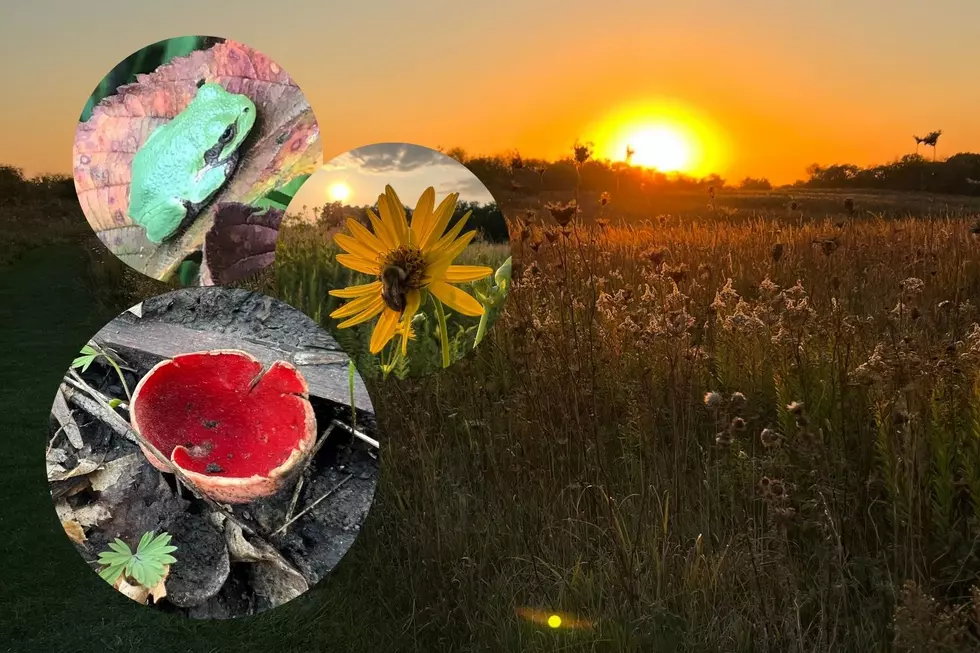
If You Spot This Worm in Iowa – Kill It!
Usually, a good sign of a garden's health is the presence of earth worms or nightcrawlers. Of course, nightcrawlers are beneficial earthworms that provide natural aeration of soil. They allow water and oxygen to penetrate more easily into the ground.
In addition, their feeding and excrement helps recycle nutrients and fertilize the soil.
That is NOT the case with these nasty jumping squigglers!
Introducing the Asiatic Jumping Worm; this invasive species can severely degrade soil quality and impede plant growth. The Asian jumping worm is named for their thrashing and jumping behavior. That "ability" allows them to flip themselves up to a foot off the ground. They also have what has been described as a voracious appetite. Unlike typical worms, they move in a serpentine "S" motion and can shed their tails to escape perceived threats.
Videos shared on TikTok (like the one below) by shocked horticulturists depict the erratic movements of these invasive worms, leaving gardeners uncertain about how to remove them from their gardens or which worms should be destroyed and which to save.
@kellihilliard I went out to my garden this morning and, oh my, the worms were having a party! I was excited to see so many, then I spotted the dreaded white ring. Do I have Asian Jumping Worms (a.k.a., Amynthas, Alabama Jumper, Asian Crazy Worm)?? I am planning to kill as many as I can, but are ANY of these worms good? Can the ones without the rings live? #help #AsianJumpingWorms #Garden #Carrot #Tomato #Watermelon #Sigh #CapCut ♬ original sound - Kelli Hilliard
Unlike earthworms, jumping worms do not burrow deep into the soil but instead reside in the litter layer. They have a never-ending appetite which leads them to consume the entire litter layer. Usually that layer serves as a habitat for numerous tiny insects. This poses a problem as many plants rely on the litter layer for their growth and survival.
Pink Band = Good, White Band = Bad
Originally introduced to the United States in the 1900s through soil in potted plants, jumping worms have now been observed in 34 states, with Wisconsin being the most recent. In addition, they are also found in Illinois, Missouri, Minnesota, and yes Iowa. Experts warn that jumping worms have the potential to invade the entire eastern half of the United States and parts of Canada due to their adaptation to humid continental and subtropical climates. The worm can reproduce without mating during its active season. Populations grow rapidly, reaching peak abundance in late summer/early fall, and outcompete other species.
The impact of jumping worms on soil is significant. They can transform soil into dry, granular pellets, similar to that of coffee grounds. This makes it difficult for plants to grow. Additionally, they essentially do the exact opposite of regular earthworms; depleting soil nutrients, disrupting soil organisms, and creating conditions in which invasive plants and weeds thrive.
So how do we prevent these invaders?
The Wisconsin DNR recommends these steps:
- Educate yourself and others to recognize jumping worms
- Watch for jumping worms and signs of their presence
- Arrive clean, leave clean. Clean soil and debris from vehicles, equipment and personal gear before moving to and from a work or recreational area – they might contain jumping worms or their cocoons
- Use, sell, plant, purchase or trade only landscape and gardening materials and plants that appear to be free of jumping worms
- Sell, purchase or trade only compost and mulch that was heated to appropriate temperatures and duration following protocols that reduce pathogens.

But I've already got them what do I do?
The Wisconsin DNR has your best answers there as well.
- Remove and destroy jumping worms when you see them. Simply seal them in a bag and throw it in the trash. Reducing the adult population will eventually reduce the number of egg-carrying cocoons.
- Heat treatment. Jumping worms and their cocoons are sensitive to high temperatures. Research has shown that neither worms nor cocoons can survive 104°F or above for more than three days. Under the appropriate conditions and management, compost piles can easily reach this temperature. Using clear plastic to cover the topsoil of gardens and lawns exposed to full sun, can raise the temperature enough to kill cocoons.
- Chemical treatment. Research has shown that the biological insecticide, BotaniGard, can significantly reduce the abundance of jumping worms. Be careful; it could also kill native insects, like honeybees.
- Experiment. Try a variety of plants or consider alternative landscaping in infested parts of your property. Try a variety of mulch products such as straw or native grass clippings.
- Keep your chin up. Research is moving forward to find ways to control and manage jumping worms. As you experiment with controls and adapt your gardening practices, share your successes (and failures) with fellow gardeners, land managers and researchers so others can learn.
Additional food for thought
Anglers might be thinking, "Hey this worm would be a great way to bring in fish." While it may entice a few fish to bite it will also almost certainly damage your favorite fishing area. People spread jumping worms by transporting horticultural materials that are contaminated with cocoons. This includes dumping earthworms used as fishing bait. Again, jumping worms don’t need mates to reproduce and one worm can start a local invasion.
Deal with these pests and keep your local area beautiful, like the places below:
Photos: Northeast Iowa's Yellow River State Forest
Wisconsin Dells: Upper Dells Tour
Photos: Palisades-Kepler State Park
More From Eagle 102.3









